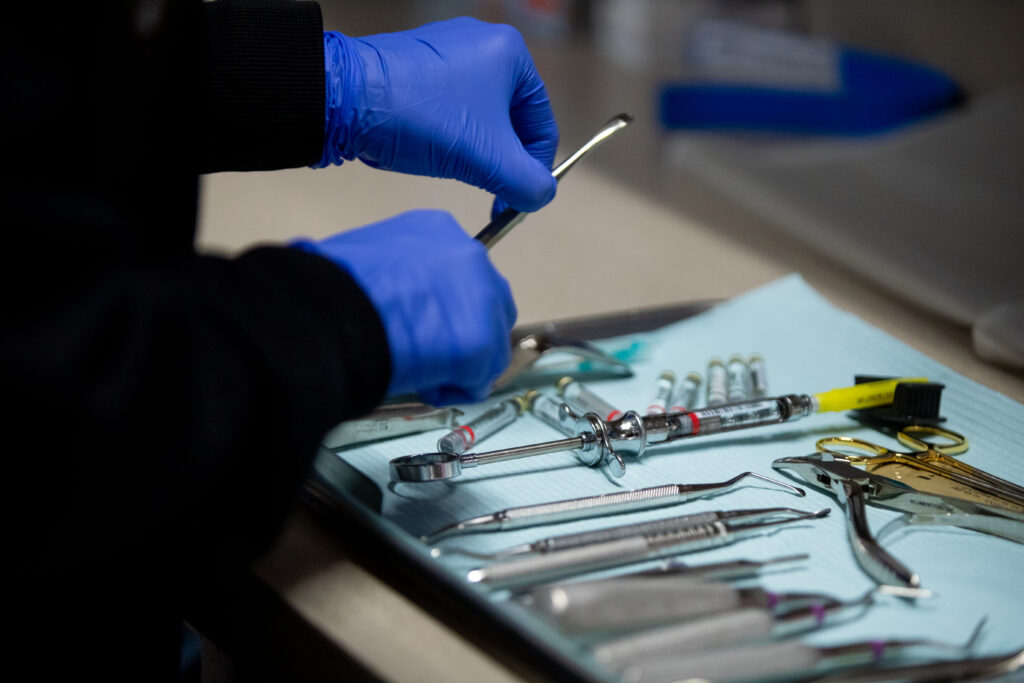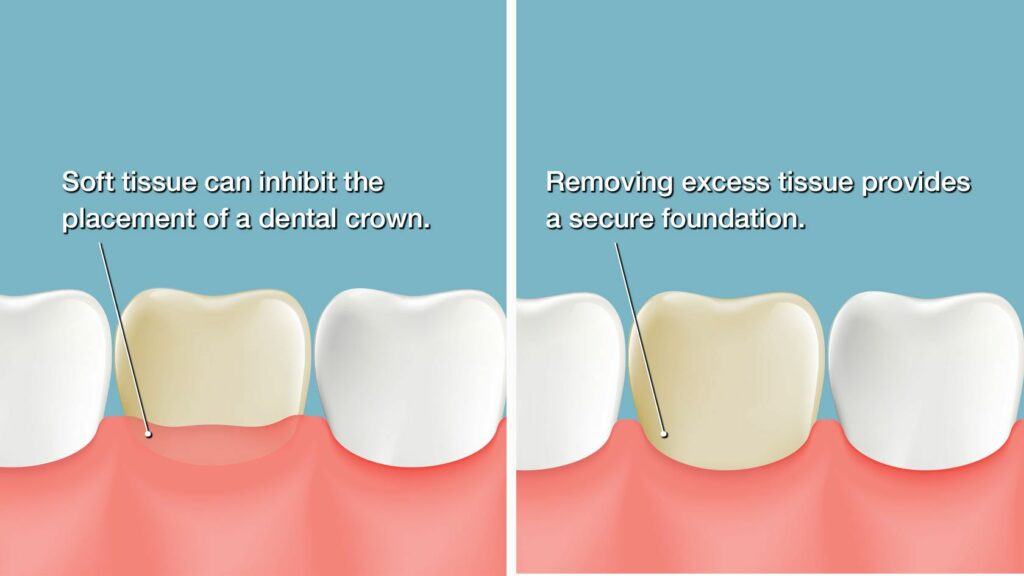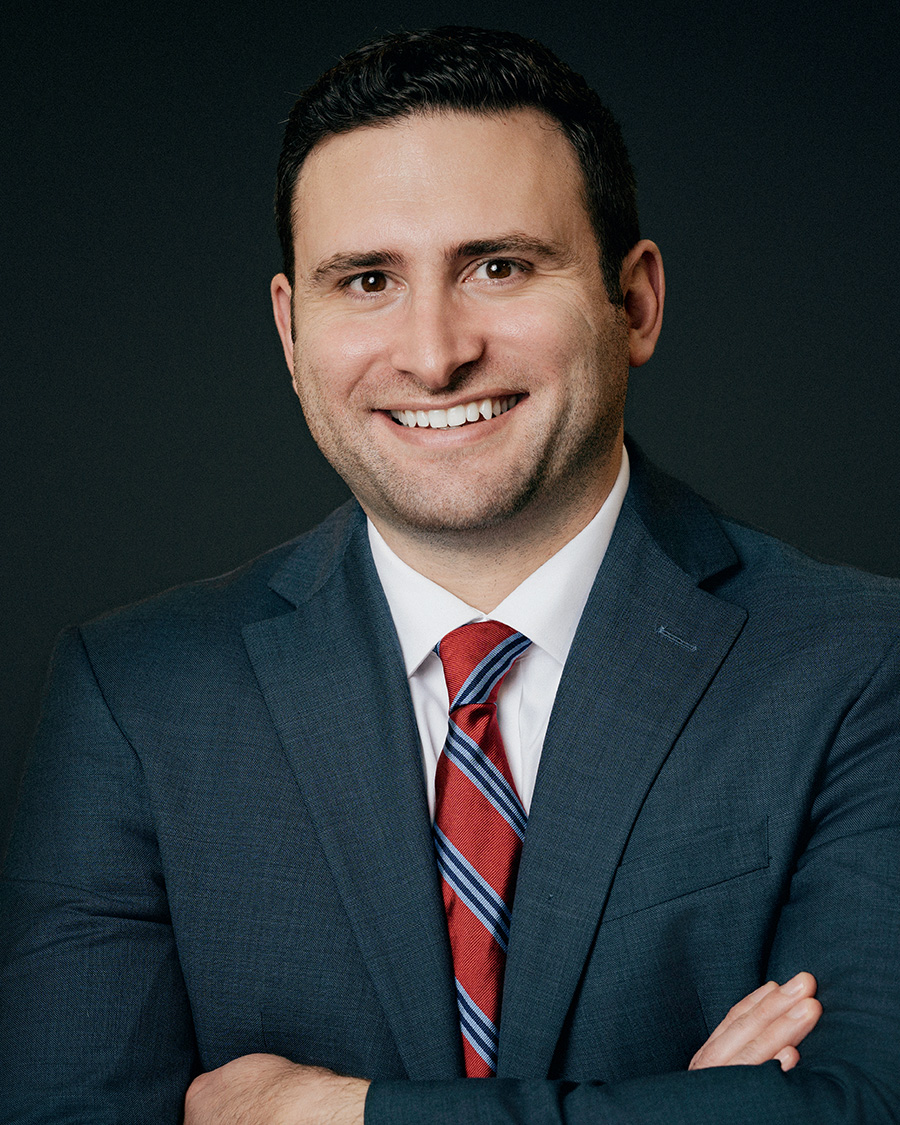create a better foundation
Crown Lengthening
If you have been told you need a filling or dental crown, you might first require a preparatory procedure called crown lengthening.
It allows your dentist to access decay or create a better foundation for your crown. It may also be recommended before receiving a veneer.

Want to see how the procedure works?
- Conservative Treatment
Your oral surgeon will work carefully to preserve as much healthy tissue as possible. We also have dental lasers that allow for highly precise contouring.
- Minimal Discomfort
Local anesthesia will be used to completely numb the treatment area, and we also offer sedation options.
- Better Results
If a crown does not contact enough dental tissue, it can fail. A poor fit can also result in decay developing under the restoration.
Put your heath first.
Dentists only recommend this treatment if it is absolutely necessary. Failure to create a proper foundation for a restoration is risky and could result in the need for tooth extraction in the future.
A strong, healthy smile can benefit your confidence and overall health. If you are experiencing any symptoms of tooth decay or other oral health issues, speak to your dentist today.
This procedure removes excess gum tissue from a tooth in preparation for dental restoration. Extensive decay may require crown lengthening in order for the tooth to accommodate a restoration.
Is crown lengthening expensive?
Crown lengthening in preparation for a crown or filling is considered restorative, so at least a portion of the cost is probably covered by your insurance policy. This treatment can also minimize your risk of requiring more costly treatment in the future. However, if crown lengthening is performed in preparation for a porcelain veneer, it is considered cosmetic, and will not qualify for coverage.

Before your procedure.
The tooth and surrounding area will be numbed with local anesthesia. If you wear a temporary crown, your surgeon will remove it.
Small amounts of soft tissue (and bone tissue, in some cases) will be removed.
Sutures may be applied to close any incisions. Lasers usually eliminate the need for sutures.
If you wear a temporary crown, it will be placed back onto the tooth.
The gums must heal for about three months.
Once you have fully healed, your filling, permanent crown, or veneer can be placed.
Get to know us.
At Bloomington Oral Surgery, we know how to help you. Our board-certified surgeons and expert staff can provide the care you need to relieve the discomfort you feel.


